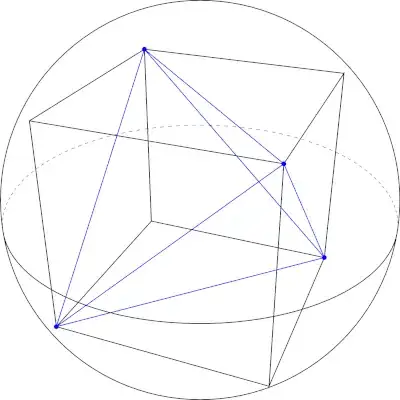I am struggling a bit with the following (elementary) question:
How to prove that every regular tetrahedron admits a circumsphere, i.e. there exist a sphere on which all four vertices lie.
I would like to find a slick elegant proof, which is elementary and "computation-free" as possible.
One possible way is perhaps to prove that all $4$ medians intersect and that the intersection point has equal distance to all vertices. (some triangles should be congruent, I guess).
But I am not sure how to do that.
In particular I prefer a proof that do not mention the notion of inner product, and do not use explicit coordinates of a particular tetrahedron. (of course, if one considers a specific set of vertices in $\mathbb{R}^3$, this can be verified directly. But I want a more conceptual geometric proof).
The best would be an elementary proof you can present to high-school students:)
A more algebraic approach would be to consider $x_1,x_2,x_3,x_4 \in \mathbb{R}^3$ to be the vertices of a regular tetrahedron, i.e. $|x_i-x_j|$ is constant for $i \neq j$. After translating we may assume that $\sum x_i=0$, and we need to prove that $|x_i|^2$ does not depend on $i$. But I am not sure how to do it.

